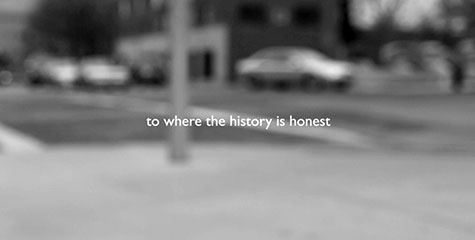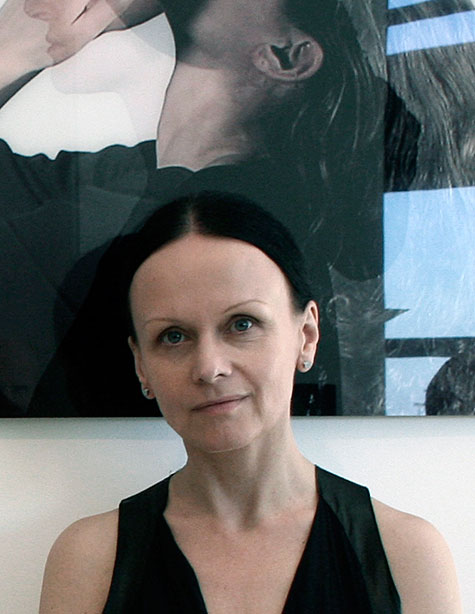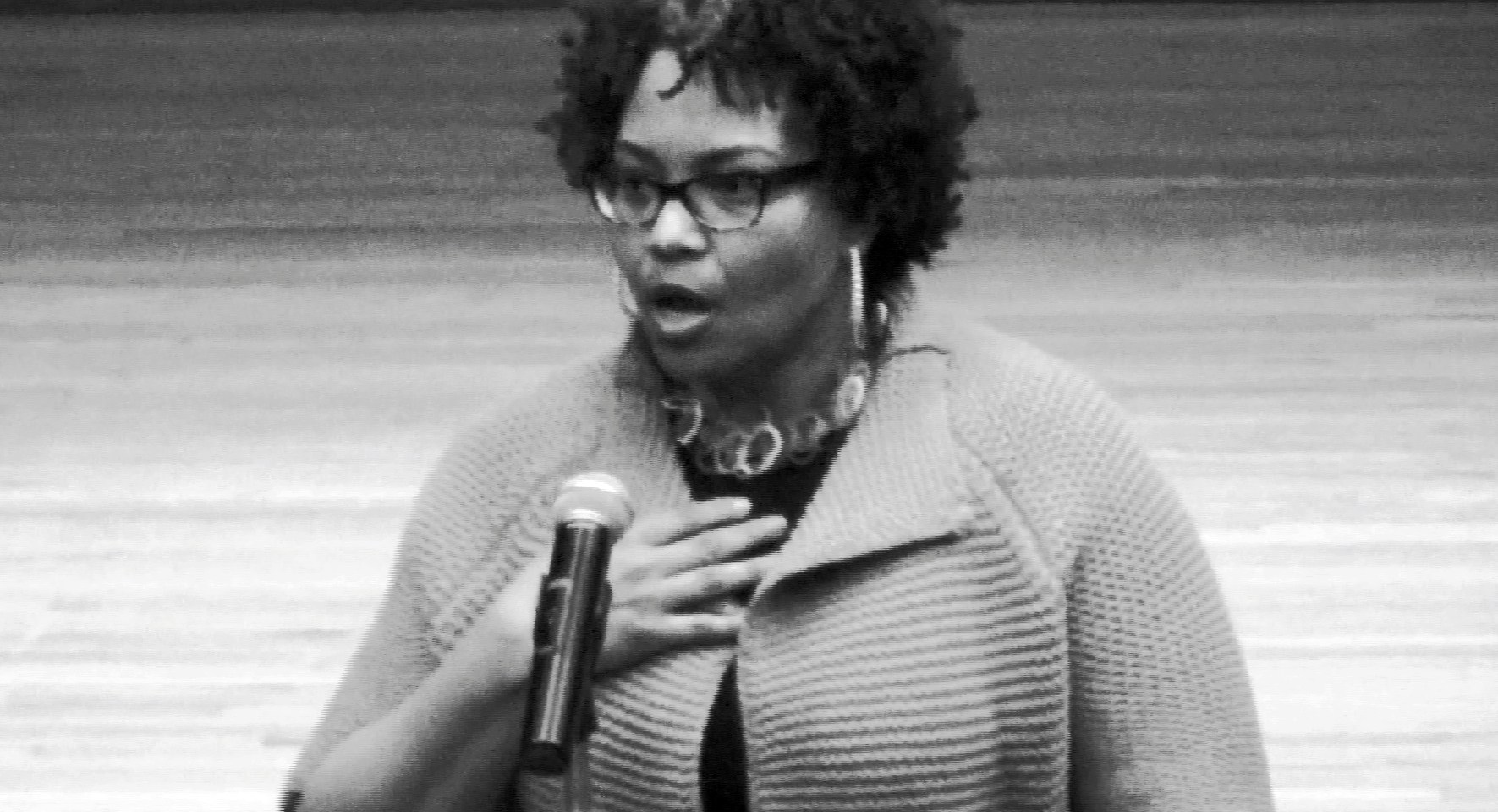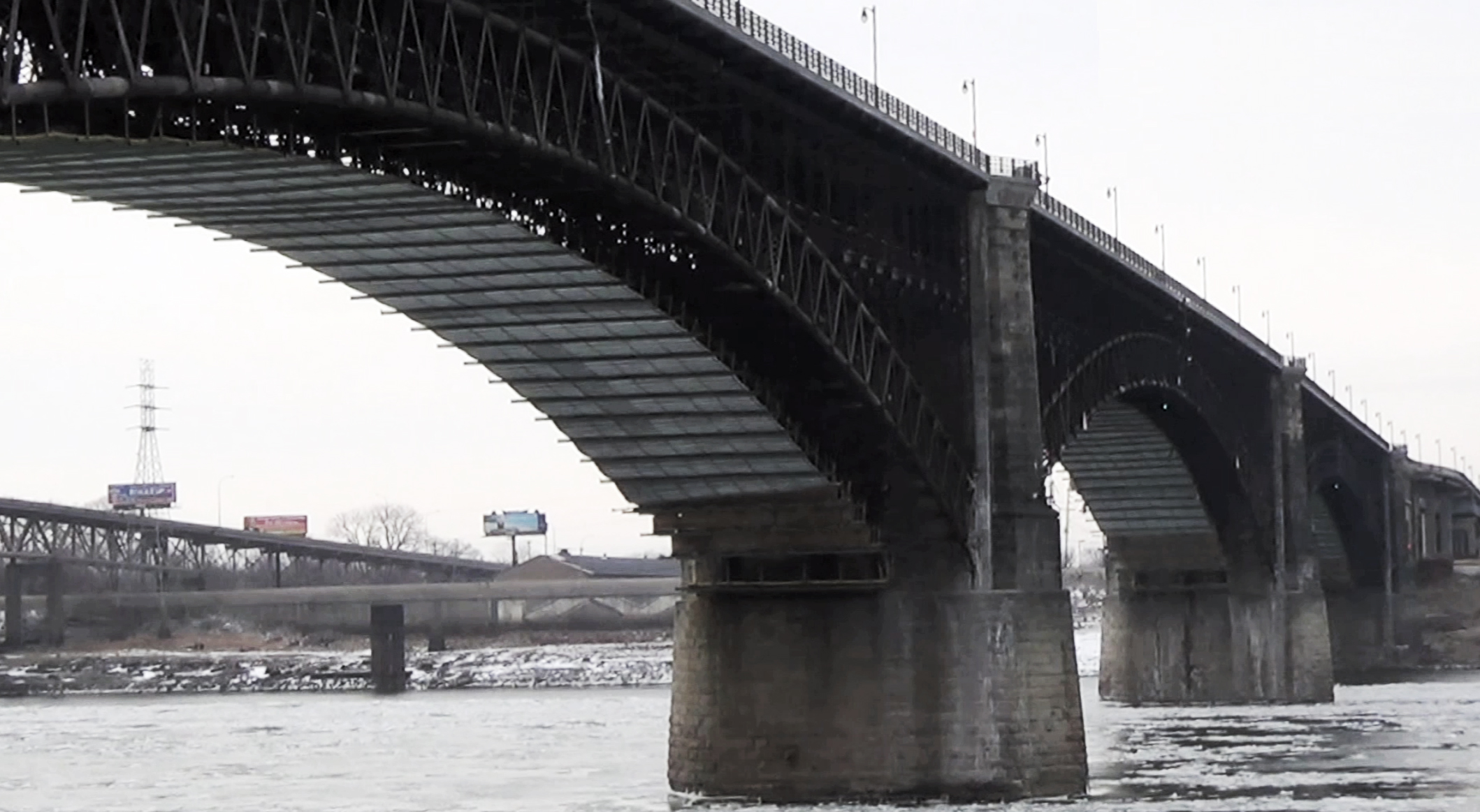
It is possible to know the world in many ways. Knowledge can be imparted not only by spoken language and the written word, but also by drawing and photography and the moving image. Visual metaphors can speak as clearly as literary ones.
This spring, 15 Washington University in St. Louis students have explored St. Louis through the language of experimental film. “Digital Filmmaking: City Stories” is a new university-wide video art course, funded by a grant from the Office of the Provost, that combines experimental cinema and documentary journalism with history, urbanism, contemporary politics and social engagement. (The course will be offered again in Spring 2015 and beyond.)
We sat down with Monika Weiss, a renowned video artist and associate professor in the Sam Fox School of Design & Visual Arts, to discuss St. Louis, digital filmmaking and the training of the mind and soul.

You’re from Warsaw, Poland, but now divide your time between WUSTL and New York, where you’ve lived for the last 15 years. What are your impressions of St. Louis?
St. Louis reminds me of Berlin and Detroit in that there’s a kind of post-industrial feeling, a disenchantment with the dreams of modernity. Flying over the Mississippi, it looks so innocent, but the river can be so violent.
Talk about your aims for the class.
The class works with St. Louis as a laboratory, but it’s also meant to go beyond St. Louis to explore the ideas of ‘city’ and public space. St. Louis represents all of those post-industrial cities that used to stand for a better, braver world. Some of my students’ films express a complex sense of global disenchantment, but they also offer hope for an ethical revival — not by building newer or bigger factories nor through other conquering dreams, but by pointing towards a necessity of public forum.
What I teach is a practice of fundamentally nonindifferent vision and active empathy. ‘Filmmaking’ in this class is done via digital means, however it considers image-making as a form of cinematic and conceptual approach.
CITY STORIES TRAILER from Monika Weiss on Vimeo.
Talk about the structure of the class. How does the semester unfold?
The course is divided into three parts. During the first third, we do a lot of reading, writing and thinking: Saskia Sassen on the city as a weak regime, Krzysztof Wodiczko on his ‘City of Refuge,’ Bill Viola on the power of the moving image. We look at films, including works by the video artist Silvia Kolbowski and the documentary filmmaker Peter Yost. And in February, we did a lecture and workshop with Alfredo Jaar, who is an artist as well as a filmmaker and educator.
The second part is about writing proposals. Instead of immediately filming something without a reason, I want students to really think about ideas and the city and ways of making a difference. It’s a training of the mind and soul rather than just the hands.
The last part is all about production. Production, production, production, and then post-production. In a sense, we try to squeeze a year of work into one semester.
So you begin with the general and theoretical but end with something very specific and concrete. Is that typical of your approach?
I consider myself a professor of practice — I teach what I do. And this course is directly related to my experience as a practicing contemporary artist working at the intersection of memory, history and public space.
I teach mostly graduate seminars in our MFA program — but perhaps not surprisingly, this intellectual approach matches what I perceive as a crucial need harbored by the highly transdiciplinary-minded current generations of students, across all academic levels.
Art practice, and what it means to be a cultural maker or thinker, has changed tremendously over the last 10 or 15 years. Today, we have a continuously increasing ability to use powerful technical tools, but thinking critically is still the most important skill.
Alfredo Jaar says that 99 percent of contemporary art-making is thinking, and 1 percent is actual making. That’s slightly farther than even I would go! [Laughs] But a key part of the class is working with, and towards, ideas, something that both mine and Jaar’s approach represents.
You’ve talked about building stories from collective rather than individual experiences …
I believe artists and filmmakers need to tell both. We should not hide who we are; rather, there’s a level of honesty that has to be revealed. In order to tell a collective story, in order to address systems, cultures and laws, we also have to tell our own story — and then somehow, in the process of making, to overcome our singularity towards focusing on others, for others.
Ultimately, I think the short films these students have created are not for themselves as much as they’re for others. They’re political as well as poetic.

Political in the sense of partisan politics, or more generally in the sense of public engagement?
Definitely the latter! “Political” in its original sense, from the Greek “polis,” which means city or public space — a forum for debate between equals.
While “political” in my teaching reflects the reasons why the work may be important to others, the term “poetic” refers not only to the formal decisions, but also to the personal relevance.
Do you see differences in how fine arts and non-fine arts students approach filmmaking?
Certainly, the art students have a better idea of how long it takes to make even a short film. Students from outside the field can be surprised by how much work goes into making a work of art. [Laughs] But by the middle of the semester, I think everyone was on the same level of understanding.
All of the films are self-driven. I think I put gray hairs on their heads, asking, “What is important to you?” “What should others care about your film?” But none of the films are assignment-based. We partnered with the Gephardt Institute, but it was inspiring to see how many students were already active in the city and came with their own experience of activism and social engagement.
Talk about the final projects. What’s the balance between documentary versus experimental films?
All are all “shorts” so they function like etudes in music; all are under eight minutes. I’d say that two or three are classically, traditionally documentary. Maybe five or seven are in between. The remainder are more poetic films, though there’s still a political/ethical reason or meaning.
None are merely aesthetic or personal investigations. I wouldn’t allow that! [Laughs]
The subject had to be something other than oneself.
Yes, however not by taking the self out of the issue, on the contrary. While the films had to engage a specific story or concern related to the history and memory of the city, they also had to be relevant to the student.
Can you describe some of the films?
Beyond most of those seemingly poetic/experimental films, there is a lot of “dry” research and a particular concern with the archive of events and narratives. For instance, the silent film by Jimena Gracia is based on her research of the toxic chemical spraying, which were covert experiments conducted by the military in Pruitt-Igoe in the 1950s.
The meaning of Zachary Hernandez’s minimalist and visually architectural film “Bridge” points at space divisions as inherently political but also affective and was informed by his life experience and his reading of geographer Doreen Massey. Zoe Kase projected images of old Soulard buildings and maps onto the human body, which she then re-filmed, to talk about mapping and the space of the city as fragile and skin-like.
Dara Katzenstein combined two cities, Kiev (Ukraine) and St. Louis, in her exploration of public protest. Rebecca Shuman interviewed a homeless St. Louis citizen; his words became like a form of strange poetry in her black and white meditative film. Anirudh Krishna’s film focuses on the life of an immigrant from Liberia through just one brief memory of his childhood times, while a documentary film by Michael Tabb talks about St. Louis “transplants” who are often temporary migrants, such as himself — a state of being characteristic of the 21st-century culture.
Megan Odenthal’s powerful short film “Normandy Strong” demands our attention for not only one group of several thousand children in the Normandy District that might soon be displaced, but also asks a bigger question about relationships between racism, education and citizenry.
Students from Digital Filmmaking: City Stories will screen their works in the Sam Fox School’s Steinberg Auditorium from 6-10 p.m. Friday, May 2. The event is free and open to the public and will be preceded by a reception at 5:30 p.m. For more information, call 314-935-9300 or visit http://samfoxcitystories.org.
